Largest wind farm project puts Mannar Island in Danger
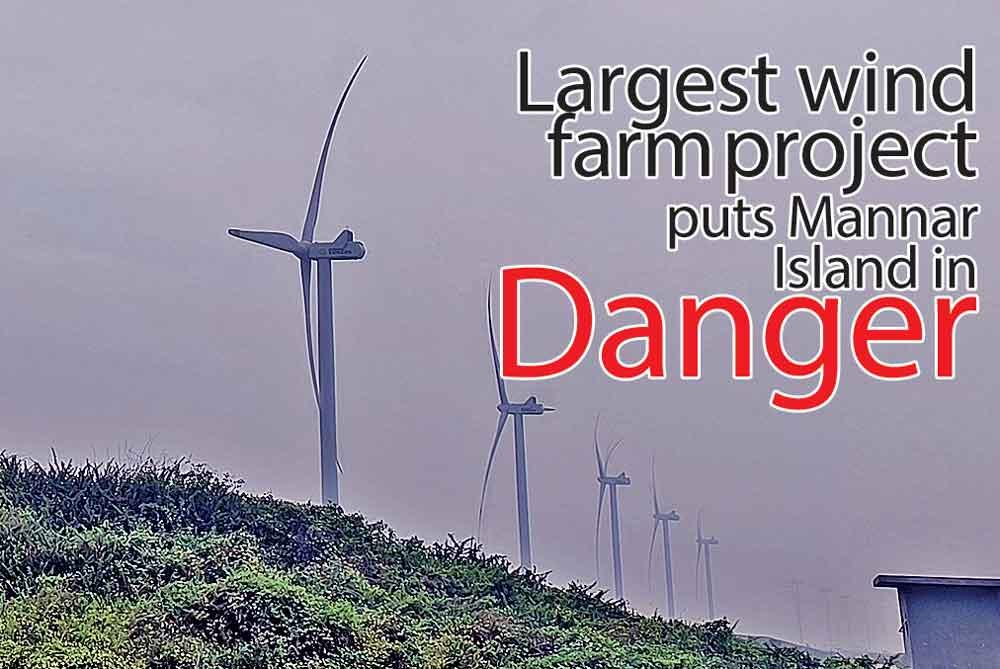
Mannar has been chosen as the site for the largest wind power project in South Asia
| A large wind power project, built by the Ceylon Electricity Board (CEB) and India’s Adani Group, has disturbed the island’s natural balance
While the project aims to produce clean energy, it has caused severe flooding Poor planning has blocked the natural water flow, leading to disastrous effects for both people and wildlife According to environmental reports, 20 more wind power plants are planned in addition to the 30 already built near Talaimannar Local government officials claim they are unaware of the problem, and past governments have ignored complaints about the wind power project |
Every year, as winter arrives, thousands of migratory birds fly south in search of food and water. Many of them find a temporary home on Mannar Island, Sri Lanka’s largest island. This special place welcomes birds from over 30 countries, offering wetlands where they can rest, feed, and breed for nearly six months before returning home. Mannar is an important stop on the Central Asian Flyway, a major migration route for birds.
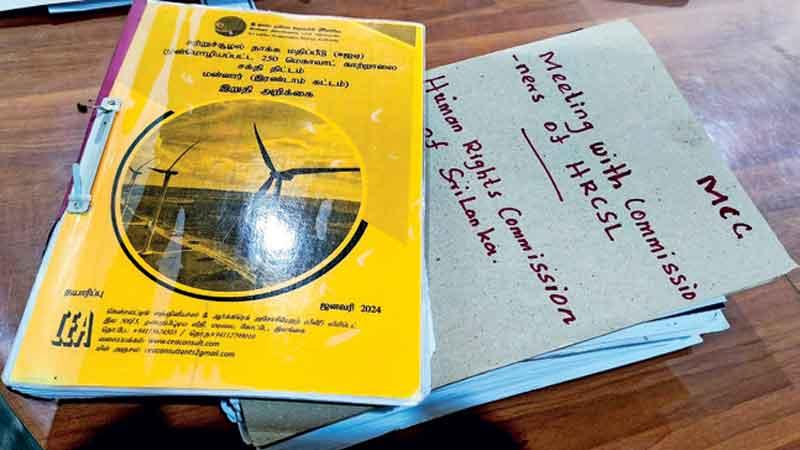
Letters sent to officials
However, this fragile environment is now in danger. A large wind power project, built by the Ceylon Electricity Board (CEB) and India’s Adani Group, has disturbed the island’s natural balance. While the project aims to produce clean energy, it has caused severe flooding. Many homes and fishing areas have been damaged, and some parts of the island have turned into marshland. Additionally, large-scale limonite mining is further harming the land.
Local community faces struggles
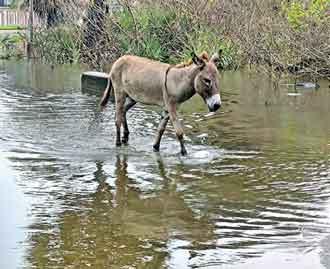
Even animals in the area are affected by flooding |
Mannar’s 70,000 residents, mainly fisher folk and farmers, are struggling to cope with these changes. When Sri Lanka’s largest wind farm was built in 2020 along a crucial bird migration route, the local people strongly opposed it. However, they did not expect the long-term damage it would cause to their land and way of life.
A media team and members of the Center for Environmental Justice (CEJ) recently visited Mannar to assess the damage. They met with the Mannar Citizens’ Committee (MCC), led by President Fr. S. Marcus, who shared his concerns. Reports from the Mannar District Secretariat and the Disaster Management Centre warn that if flooding continues due to wind turbines, new roads and a railway line, the island may become uninhabitable in the near future. Poor planning has blocked the natural water flow, leading to disastrous effects for both people and wildlife.
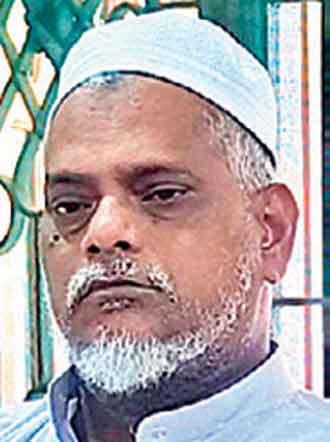
 Even though heavy rains have been received in areas such as Thevipuram, Puthukk udiyiruppu and up to Talaimannar, such flooding has never been experienced before. Three to four years after the commencement of wind power plants and illegal mineral sand mining projects, flooding in the Mannar district has increased”
Even though heavy rains have been received in areas such as Thevipuram, Puthukk udiyiruppu and up to Talaimannar, such flooding has never been experienced before. Three to four years after the commencement of wind power plants and illegal mineral sand mining projects, flooding in the Mannar district has increased”
– Mawlavi Azim, President All Ceylon Jamiyyathul Ulama
MCC Vice President and President of All Ceylon Jamiyyathul Ulama Mawlavi Azim claimed that most of the government institutions are located in Mannar Island. “Even though heavy rains have been received in areas such as Thevipuram, Puthukkudiyiruppu and up to Talaimannar, such flooding has never been experienced before. Three to four years after the commencement of wind power plants and illegal mineral sand mining projects, flooding in the Mannar district has increased,” said Azim. He added that previously, several natural waterways allowed rainwater to flow into the sea. However, after the implementation of these projects, the construction of roads blocked these natural waterways. As a result, rainwater has no proper outlet to the sea, leading to persistent flooding, with water remaining for more than six months, according to Azim. Due to floods, the small and medium-scale agriculture lands with crops have been destroyed. He said that large-scale illegal limonite sand mining will make the island unsuitable for habitation. With Mannar Island’s growing population, there will not be enough land for people to live on. Companies have exploited the poverty of innocent locals by purchasing their land for minimal amounts of money.
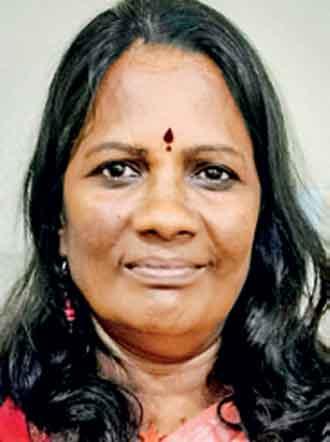
 Many families have already left for India due to the difficult living conditions. If all the planned wind turbines and mining projects are completed, there may not be enough land left for Mannar’s people to continue living”
Many families have already left for India due to the difficult living conditions. If all the planned wind turbines and mining projects are completed, there may not be enough land left for Mannar’s people to continue living”
– M.Lakshi Kurushanthan, Mannar Women’s Development Federation President
Many people in Mannar traditionally earn a living by making handicrafts and food products using palmyra trees. However, due to these developments, the density of palmyra trees is looking bleak and also threatening their livelihoods.
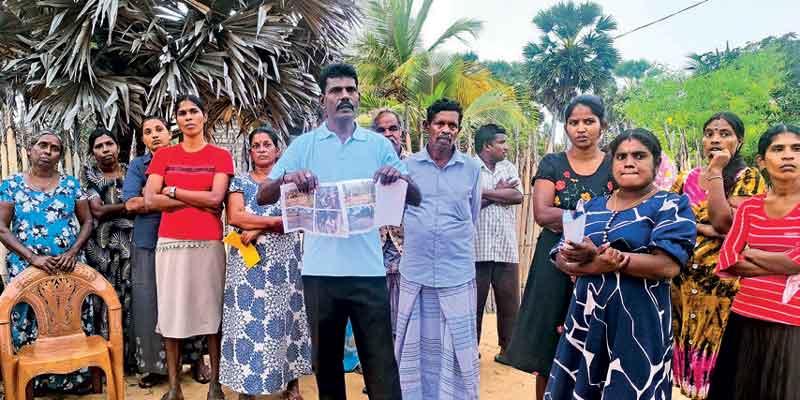
People affected by the wing power projects express their views
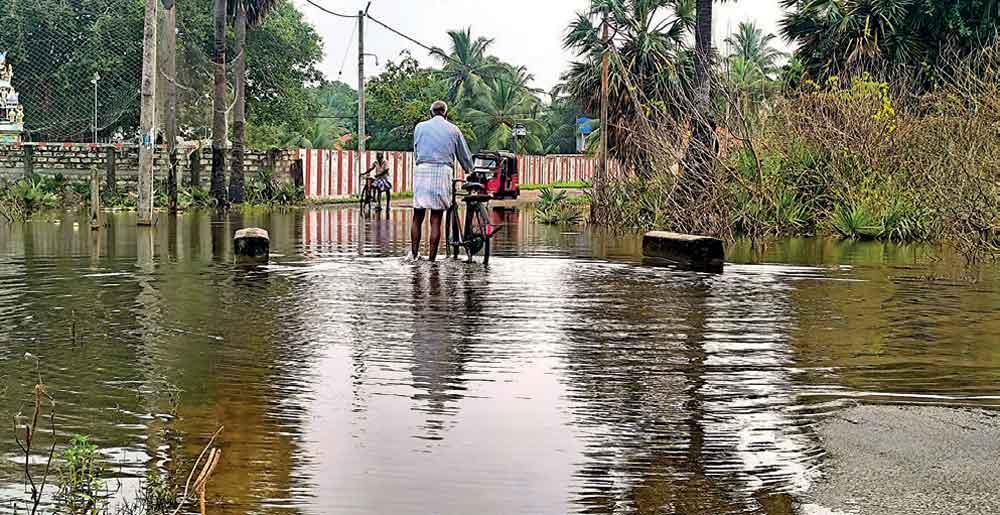
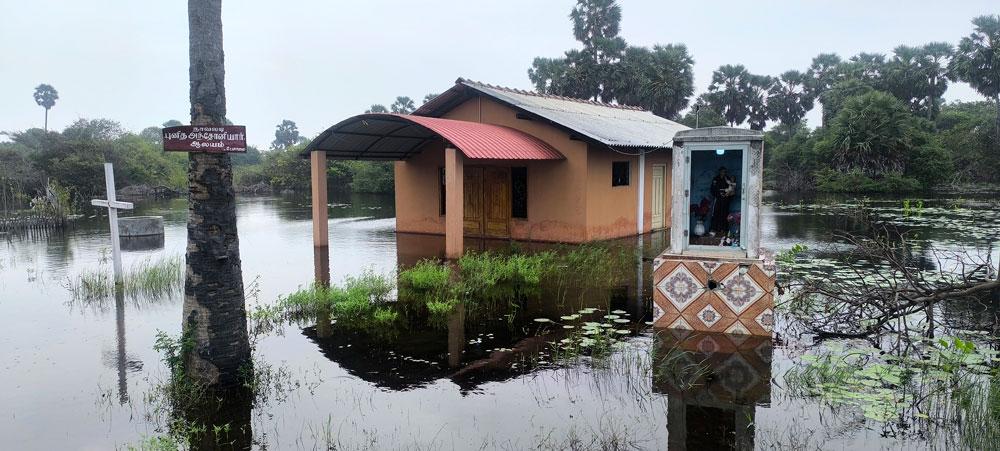
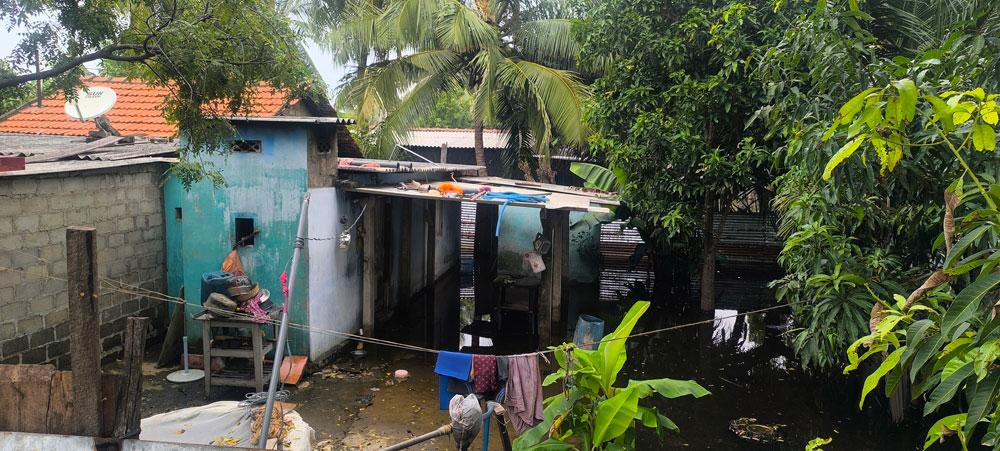
Reports from the Mannar District Secretariat and the Disaster Management Centre warn that if flooding continues due to wind turbines, new roads and a railway line, the island may become uninhabitable in the near future
Future plans raise more concerns
According to environmental reports, 20 more wind power plants are planned in addition to the 30 already built near Talaimannar. There were also plans for 56 large-scale wind power plants under Adani Group, but the Indian multinational conglomerate has pulled out of this project. This project was expected to generate 250 megawatts of electricity. CEJ strongly opposed the Adani project and even filed a court case to stop the construction of these wind power plants.
Besides wind power, other industries are causing harm to Mannar. For over a decade, an Australian company has been mining heavy mineral sands, as Mannar Island has the world’s fourth-largest limonite deposit. However, this project has seen little success. Another company from India has also completed mineral exploration in Pesalai, where the Thambapavani Wind Farm is located. Due to new mining policies, companies are now allowed to export one-third of the mined sand within the first two years.
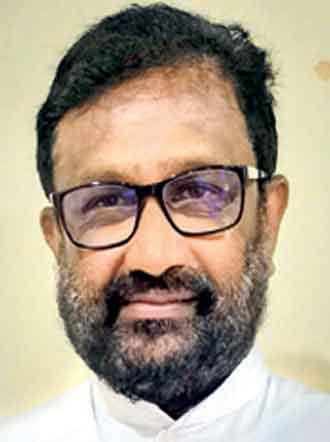
 Fishing and farming were their main sources of income, but after the construction of 30 wind turbines, the surrounding land was filled with clay to build roads. This has prevented floodwaters from draining into the sea, causing villages to remain underwater for over six months”
Fishing and farming were their main sources of income, but after the construction of 30 wind turbines, the surrounding land was filled with clay to build roads. This has prevented floodwaters from draining into the sea, causing villages to remain underwater for over six months”
– Fr. S. Marcus, President Mannar Citizens’ Committee
Some of these companies have already made deals with local residents to buy land, and they have even hired former armed forces personnel to pressure poor residents into selling their properties.
Threat to livelihoods and environment
Fr. Marcus emphasised that the wind power project has severely affected the lives of Mannar’s people. “Fishing and farming were their main sources of income, but after the construction of 30 wind turbines, the surrounding land was filled with clay to build roads. This has prevented floodwaters from draining into the sea, causing villages to remain underwater for over six months.
“Flooding has made basic living conditions worse. Many families don’t have access to clean drinking water and ater has become contaminated with floodwater and sludge. The toilet pits have overflowed, further polluting the underground water supply. As a result, people are suffering from waterborne diseases. Many families now have to buy bottled water, costing them over Rs. 6,000 per month, which they can barely afford,” Fr. Marcus said.
Fr. Marcus said that despite sending letters to government officials, including the President, there has been little action taken to resolve these issues. Local government officials claim that they are unaware of the problem, and past governments have ignored complaints about the wind power project.
At the time the complaints were made, Adani Group denied reports that its 484 MW wind power projects in Mannar and Pooneryn were canceled as speculated and added that the Sri Lankan government was simply reevaluating the tariff rates.
Fight against further construction
Fr. Marcus said that while they aren’t against generating electricity, the location chosen for the wind power plants is unsuitable. He stressed that the project should have been carried out in an area where it would not harm people or the environment.
Mannar has been chosen as the site for the largest wind power project in South Asia. However, there are fears that the construction of large turbine foundations could destabilise the island’s soft underground plates, making it vulnerable to natural disasters like tsunamis.
Government officials say that they need scientific proof before they can take action. This has left the people of Mannar struggling to find a way to present their case scientifically.
A divided land and rising tensions
Fr. Marcus also expressed concerns that Mannar, historically home to both Sinhalese and Tamils, is being unfairly targeted for destructive projects. He thanked the CEJ for raising awareness about these issues beyond the island.
He emphasised that while they support clean energy, they will fight to stop any further wind power projects in Mannar. He also urged the authorities to relocate the project to another district where it would not harm local communities.
Government response and community efforts
Mannar District Secretary K. Kanageswaran explained that the Thambapavani Wind Power Project by CEB and the proposed Adani project were approved by the Sri Lankan Cabinet. “As a government official, I do not have the authority to oppose this decision. A district coordinating meeting was held recently to discuss the issue, and they plan to take their concerns to the President,” said Kanageswaran.
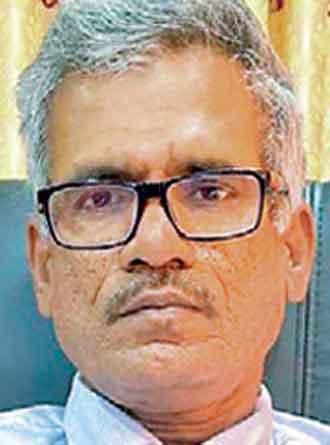
 As a government official, I do not have the authority to oppose this decision. A district coordinating meeting was held recently to discuss the issue, and they plan to take their concerns to the President”
As a government official, I do not have the authority to oppose this decision. A district coordinating meeting was held recently to discuss the issue, and they plan to take their concerns to the President”
– K. Kanageswaran, Mannar District Secretary
Due to poor planning, flooding has become a severe problem. People in Mannar warn that they will not allow similar wind power projects to be built in the future. Letters of protest, petitions, and complaints have been sent to the previous government and the CEB, but the situation has not changed. Now, local leaders hope to bring the issue to President Anura Kumara Dissanayake and request that the project be moved to other areas such as Musali, Nanaddan or Mandaitivu.
Mannar is a low-lying island, with two-thirds of its land below sea level. Large-scale projects like wind farms and sand mining could make the land even more unstable and unsuitable for living.

Mannar Citizens’ Committee (MCC) sit for a meeting to address the issues caused by proposed wind power projects
Social and economic impacts
Sivaharan, a member of the Federation of Community-Based Organizations, warned that three foreign companies have already started surveying for titanium sand mining and have identified over 5,000 sites. Their environmental impact reports claim the area is safe for mining, but the people of Mannar strongly disagree.
Mannar Women’s Development Federation President M. Lakshi Kurushanthan said that after the wind power project, their cultural heritage has been violated. She criticized the government for not consulting the local people before implementing these projects.
“Many families have already left for India due to the difficult living conditions. If all the planned wind turbines and mining projects are completed, there may not be enough land left for Mannar’s people to continue living. Drug addiction, family disputes, and economic struggles have increased as a result of the loss of livelihoods,” said Kurushanthan.
She said that women, in particular, are facing hardships, including a lack of clean water and hygiene products. Many families are forced to live in temporary camps due to flooding, and the situation is becoming unbearable.
Mannar’s people are calling for urgent action. They demand proper environmental protection measures and request that these projects be moved to a location where they do not threaten lives and livelihoods.
Adani Group pulls out, respects Sri Lanka’s sovereign rightsFollowing long discussions with the CEB and the Ministry officials, on Wednesday (February 12), Adani Group had decided to withdraw from the project. The project involved setting up of 484 MW renewable energy wind farms in Mannar and Pooneryn, along with a new transmission system and expanding the 220 KV and 400 KV transmission network to deliver electricity to the southern part of Sri Lanka. In a statement, Adani Group said that the decision to pull out of the project was made after careful consideration by the company’s Board. The company also emphasised its full respect for Sri Lanka’s sovereign rights. “As we step away, we want to reaffirm that we are always open to working with the Sri Lankan Government on future development projects if they ever wish to involve Adani Group,” the statement added. |







 CHATURANGA PRADEEP SAMARAWICKRAMA
CHATURANGA PRADEEP SAMARAWICKRAMA